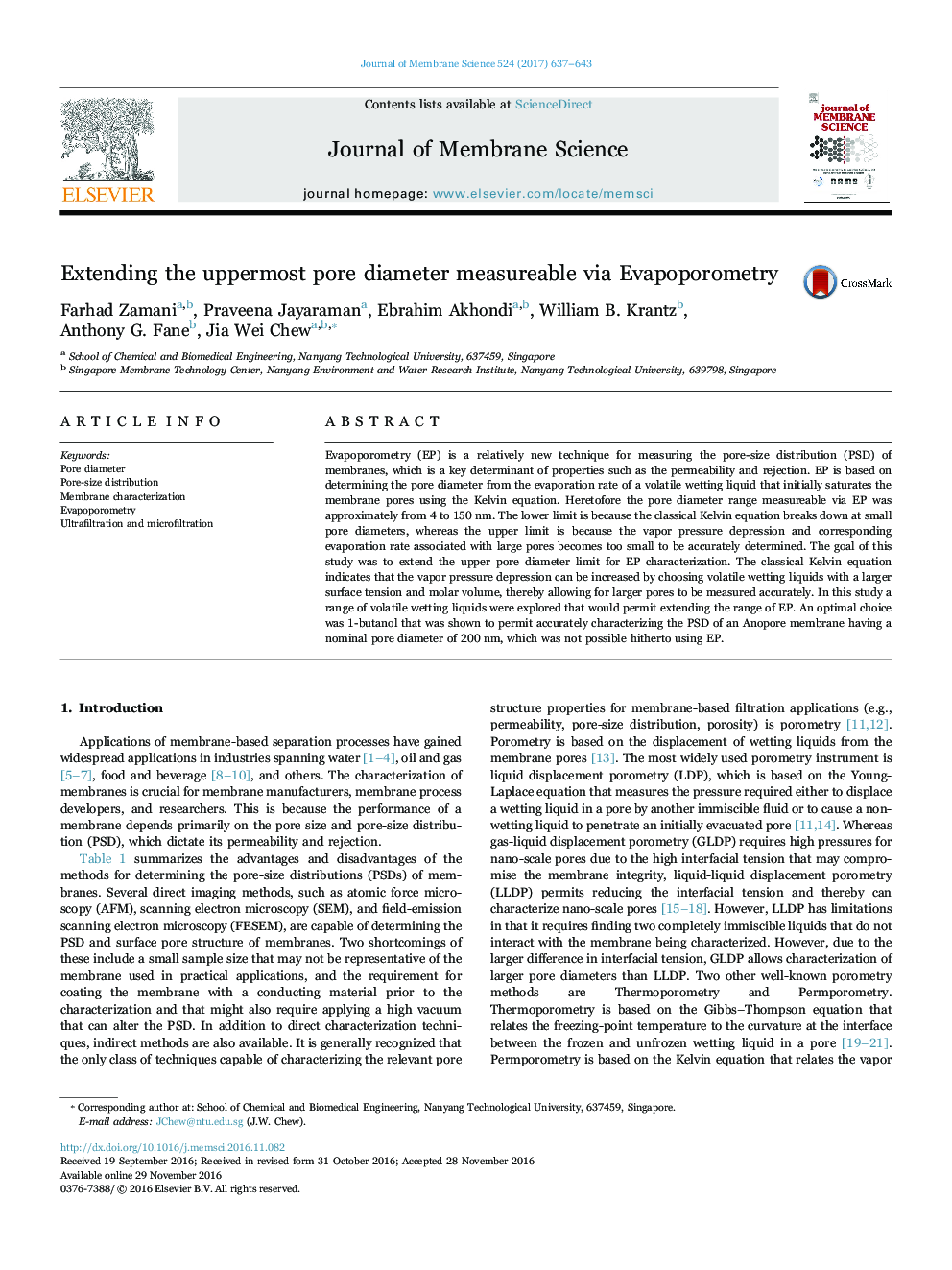| Article ID | Journal | Published Year | Pages | File Type |
|---|---|---|---|---|
| 4989250 | Journal of Membrane Science | 2017 | 7 Pages |
Abstract
Evapoporometry (EP) is a relatively new technique for measuring the pore-size distribution (PSD) of membranes, which is a key determinant of properties such as the permeability and rejection. EP is based on determining the pore diameter from the evaporation rate of a volatile wetting liquid that initially saturates the membrane pores using the Kelvin equation. Heretofore the pore diameter range measureable via EP was approximately from 4 to 150Â nm. The lower limit is because the classical Kelvin equation breaks down at small pore diameters, whereas the upper limit is because the vapor pressure depression and corresponding evaporation rate associated with large pores becomes too small to be accurately determined. The goal of this study was to extend the upper pore diameter limit for EP characterization. The classical Kelvin equation indicates that the vapor pressure depression can be increased by choosing volatile wetting liquids with a larger surface tension and molar volume, thereby allowing for larger pores to be measured accurately. In this study a range of volatile wetting liquids were explored that would permit extending the range of EP. An optimal choice was 1-butanol that was shown to permit accurately characterizing the PSD of an Anopore membrane having a nominal pore diameter of 200Â nm, which was not possible hitherto using EP.
Related Topics
Physical Sciences and Engineering
Chemical Engineering
Filtration and Separation
Authors
Farhad Zamani, Praveena Jayaraman, Ebrahim Akhondi, William B. Krantz, Anthony G. Fane, Jia Wei Chew,
